Arts
Something old, a lot of new
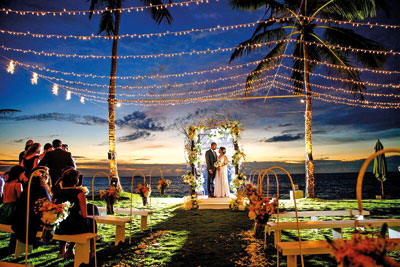
Dylan Seedin: Capturing memories
Wedding planners Erandi Narangoda and Sabrina Sathgunasigamini’s lives changed from the moment they decided to give up their corporate careers and pursue their passion. Today, Erandi is the face behind ‘Esquared Events & Moments’, while Sabrina runs her own company ‘Wedding Stories by Sabrina’.
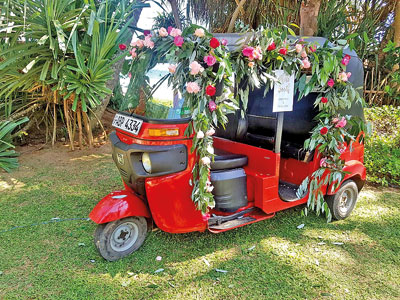
Tuk tuk photo booth: Wedding Stories by Sabrina
Erandi feels she becomes part of the couple’s journey and it’s this personal touch that makes things special for her. Sabrina adds she takes on only three to four weddings per month, so she can give each couple her fullest attention.
Just like Erandi and Sabrina, Melisha Yapa too ventured out on her own and has been running ‘End2End Events’ for nearly a year. As she puts it, “a wedding planner is usually the mediator between the parents of the couple and the couple themselves.” With a laugh, she adds her role is to keep everyone happy.
According to Melisha, weddings today are a mix of traditional and modern. People tend to like the idea of tradition for its sentimental value and this plays a big role in most weddings. “It’s a matter of finding a balance with the couple’s wishes and what their parents want. Parents still have a say and couples try to stay respectful of that.”
Nevertheless, things are slowly changing in the industry, we find. The planners reveal that though the parents of the Sri Lankan brides and grooms tend to get fully involved in the planning process, this too is changing. The newer generations have more control than before. “They give their opinions and want to do it their way rather than just having it their parents’ way,” Sabrina says.
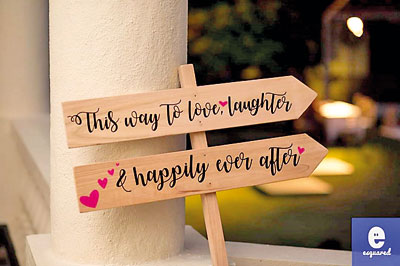
Wedding signage: Esquared Events & Moments
When it comes to decorations for the ceremony, most couples want to keep things “simple and elegant.” Many of them are often inspired by ideas they find on Pinterest or The Knot, choosing to do their research before coming to the planner.
As wedding planners, this makes their jobs more interesting and exciting as opposed to sticking to the old routine.
Even when it comes to the traditional poruwa, Erandi finds people straying away from the heavy gold structures. Instead, they prefer to incorporate simple designs and flower arrangements to create a different look.
Sabrina notices a bigger demand for lighting, with an increased use of fairy, pendant and halogen lights that create a romantic atmosphere. But she has also observed most brides are conscious that some decorations could be distracting, like big table centrepieces.
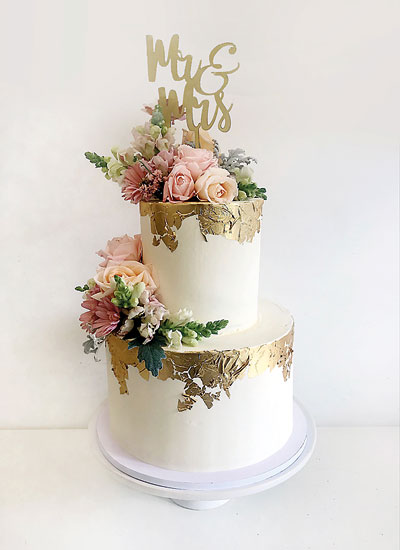
Miss Whisk:Growing demand for real cakes
Deciding on the perfect venue can also be a daunting task. Though Sri Lanka does not have rustic options such as vineyards and farmhouses, people are branching out into locations that still fit their simple aesthetics. Even the usual wedding guest lists have also decreased over the years, from upwards of 400 to a more manageable 120 – 200.
Sabrina points out that venues with unique concepts such as Barnhouse are in high demand, and several leading hotels also offer their lawns for simple wedding ceremonies. On the other hand beach hotels create different themes that fit their surroundings.
Despite these trends though, there is still a demand for banquet halls, Sabrina explains. “This could be attributed to parents being involved in the planning,” she tells us.
When it comes to the ceremony itself though, religious factors still play a key role. Most couples like keeping the traditions of their religious faiths. However, Melisha tells us that today they could also request shorter religious procedures from the ceremony.
At a Christian wedding, the service can be shortened by customising hymn length, homily and marriage vows whilst still retaining the spirituality of receiving God’s blessing.
In Buddhist ceremonies too, Ashtakas have become more flexible by removing the non-mandatory. The poruwa ceremony now focuses more on the couple, while still preserving its rituals and traditions.
The Muslims now have their religious ceremony (Nikkah) with their close family and friends, followed by a reception for the extended invitees. Hindu ceremonies are also kept simple with the main religious rituals focused on the couple.
Invitations also play a key role in the planning process of a wedding. Erandi notes that minimalistic designs are preferred. Some choose to have handmade cards which may be painted or doodled on, and a few are made out of recycled paper instead of the conventional printed card.
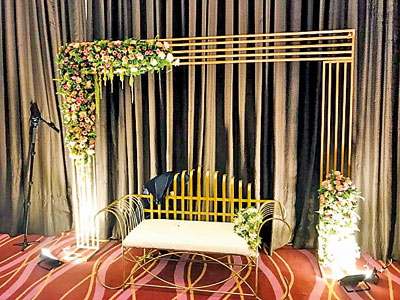
Formal setteeback - Esquared Events & Moments
Melisha observes a trend where the traditionally printed cards are sent to the close relatives, whilst e-vites or a picture of the card is whatsapped to friends and extended family. Overall, it seems as if the growing pattern is more environment friendly.
No wedding is complete without the cake and it appears that there is a growing demand for real cakes as opposed to the traditional cake structures. Most people also tend to cut the cake and serve it at the buffet, so it doesn’t go to waste.
Mihara Jayalath who runs ‘Miss Whisk’, says that most people prefer smaller, flavourful cakes without much embellishment, as opposed to extravagant designs with many tiers. “Couples are focused on having a yummy cake at the end of the day.”
The traditional rich fruit wedding cakes have also faced the tide of change, from the variety of presentations and decorative wrapping to outsourcing the cake making itself, when the time crunch proves too difficult to make at home.
Photographs capture the memories made on the special day and Dylan Seedin is certainly no stranger to wedding photography. He observes that although the parents would sometimes want the traditional posed pictures that you’d often find on the mantelpiece, the young couples are moving away from these formal portraits.
The style of photography that is requested depends on each family, though candid shots are now preferred. Couples are getting increasingly creative. Dylan is often provided with reference photos from Pinterest, or the couples detail specific moments they want photographed to remember the day.
Finally we come to the whole reason behind these formalities, i.e the wedding favours. Jokes aside though, these too have gone through changes over the years. Erandi explains that thank you cards have long been superseded by more concrete tokens of appreciation.
KayDeane Bridal, an online store provides gifts to bridal parties, which is a recent trend in Sri Lanka. They have also observed a demand for Groom & Groomsmen Gifts and quite recently provided Pyjama sets for Best-men as well.
All in all, today the variety of wedding favours are boundless, encompassing “anything that’s a personal touch which is also useful to the wedding guest.” This can range from bags of sweets, cookies and cake jars to succulent plants, bookmarks and candles etc.
From lavish receptions to more rustic ceremonies, weddings are starting to reflect the couple’s wishes.
Next week: Changing attire
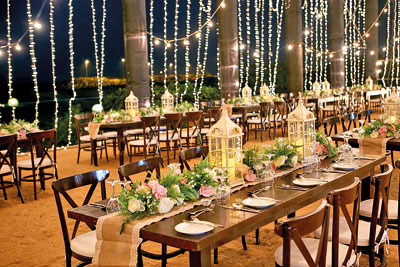
Fairy lights light up a rustic scene: Decor by Melisha Yapa
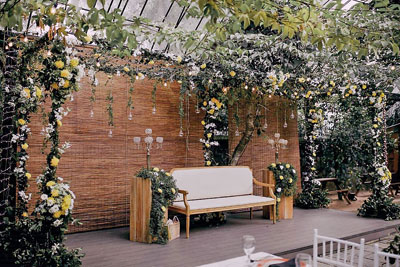
Outdoor setteeback: Wedding Stories by Sabrina
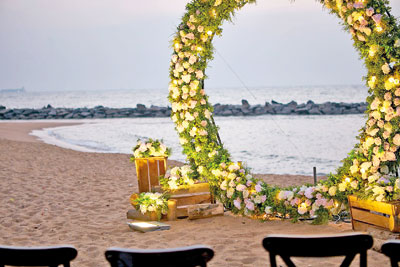
A romantic beach wedding: Decor by Melisha Yapa

